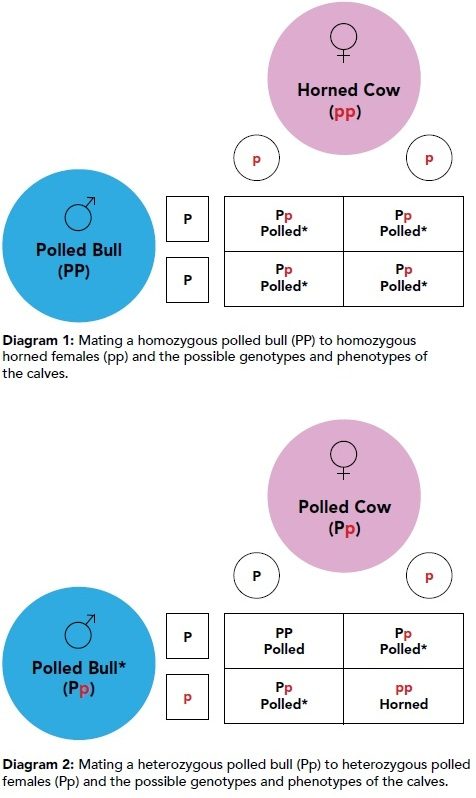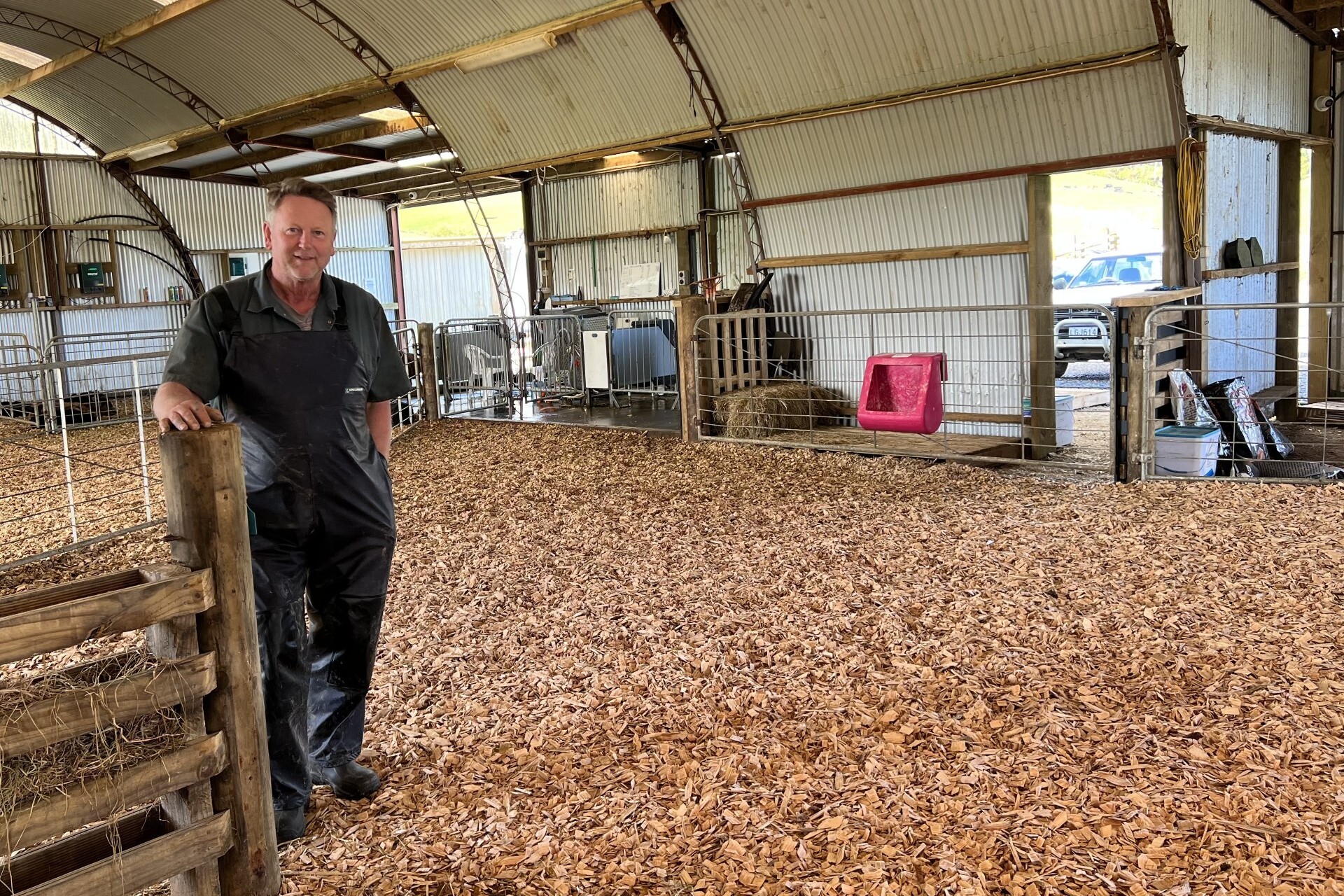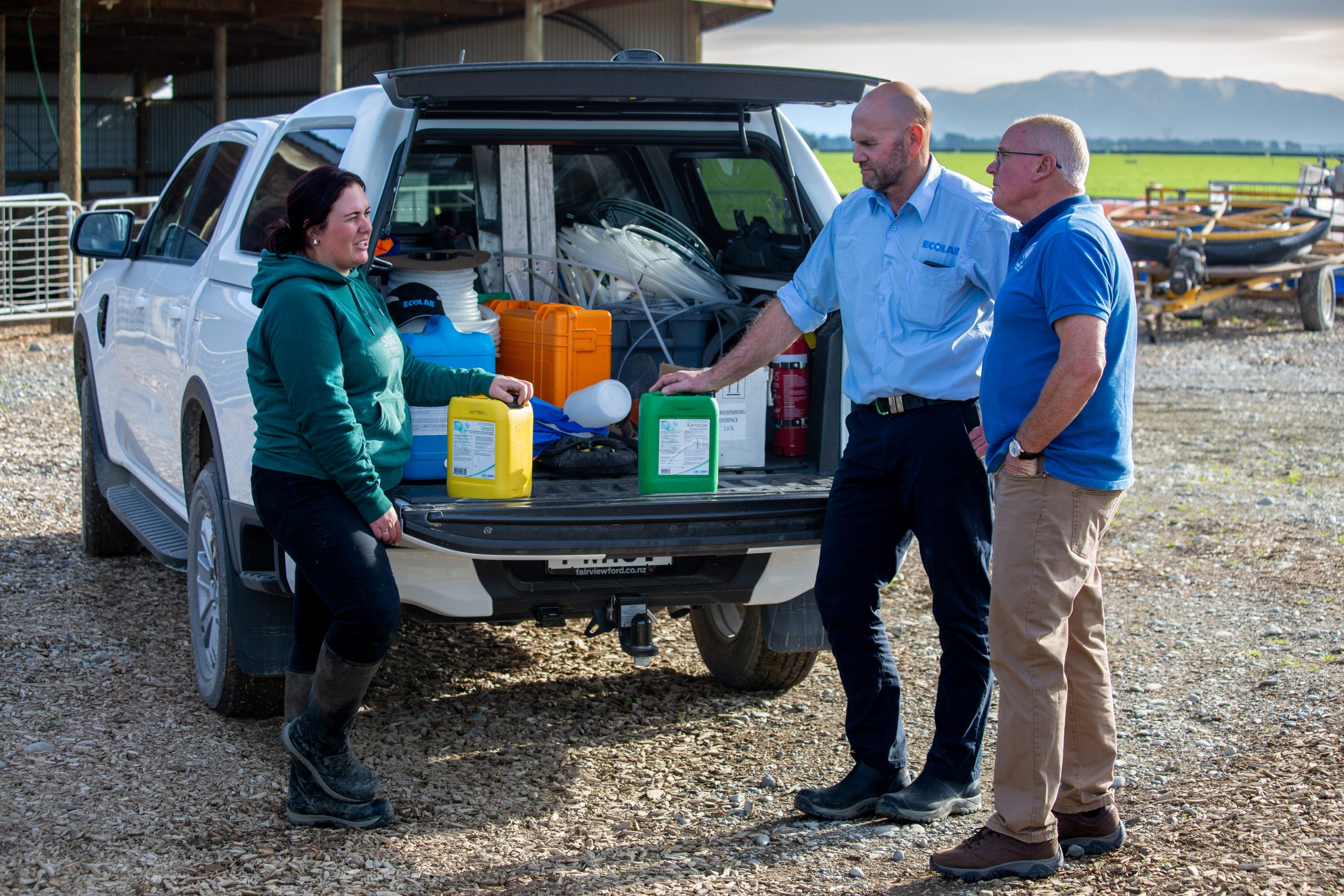Breeding dairy cows without horns is the way of the future for a Rangitikei farming family. Jackie Harrigan reports.
Breeding polled Jersey cows has been an intergenerational work for the Cameron family of Hunterville and third generation farmer Bruce says it’s the way of the future.
Polled genes are nature’s simple management tool to deal with compliance problems, he says.
He can’t see the sense in breeding animals that then need to be subjected to the pain and discomfort of dehorning at a young age, with associated animal health costs and the potential growth check that comes with it.
“United States studies show a 3kg loss of bodyweight in the week of dehorning – I think similar probably happens here, but there is no research to back it up.”
His family first started introducing polled genes into their Rangitikei river terraces dairy herd when Bruce’s grandfather bought a grade polled Jersey heifer called Poley from the neighbour in 1926.
The Poley cow and her polled bull calf set the foundation for the pedigree Ardachie polled Jersey herd Bruce runs today.
‘We are selling semen from four homozygous polled bulls into the US and they currently make up 30% of the available homozygous polled Jersey bulls in that market.’
Poley was a remarkable cow. Bruce says an article in the April 1943 Dairy Exporter magazine reported she produced a record of 540lbs of fat, was still producing at 17 years of age and birthed 14 calves – seven bulls (one polled) and seven heifers (five of whom were polled).
Fast forward to 2019, 90% of the Ardachie herd is polled and Bruce is importing homozygous semen from overseas and breeding his own homozygous polled bulls.
He only dehorned one calf this year and in 2013 the only dehorned calf that entered the dairy herd was culled – she never settled, kicking the cups off at each milking, Bruce says.
In the first Jersey herd book in 1903 there was a polled bull called Polled Prince, from a stud in Woodville which Bruce believes is the origin of polled Jerseys in New Zealand.
Other people believe the polled gene came from the Shorthorn influence, which Bruce believes is entirely feasible as many early Jerseys were graded up from milking Shorthorn crosses after the advent of the refrigerated butter trade.
Unsure as to why the NZ dairy industry hasn’t picked up the management advantages of polled genes, Bruce says polled genetics are growing very quickly overseas.
“We are selling semen from four homozygous polled bulls into the US and they currently make up 30% of the available homozygous polled Jersey bulls in that market.”
The first pure polled Danish Jersey bull is from an Ardachie bull and Bruce says the market is growing very quickly in Europe.
“The EU is going crazy for polled genetics.”
But in the NZ market the sales of polled dairy semen has been very slow, Bruce says many young Kiwi dairy farmers are not even aware that polled dairy bulls exist.
“Polled genetics seems to be something to be feared – it hasn’t registered with Kiwi farmers yet. LIC isn’t selling any polled Jersey semen, but CRV Ambreed are just about to start a comprehensive polled semen programme.”
A market is starting to come from organic farmers, Bruce says but he thinks farmers still think polledness is a beef trait and because there are no polled animals on the Ranking of Active Sires (RAS) list he thinks they think it’s too scary and that the polled cows’ production must be poor.
“The production from polled dairy cows isn’t the problem at all – but there is a problem that they have poor PW & BW indexes because there are so few polled animals in the NZAEU National dairy database and they are not well-connected genetically.”
Many farmers just use bull of the day so end up selecting for BW/PW which rules out the polled genetics.
“It’s purely a numbers game and how the model works – we are using our own bulls and imported bulls so we don’t have the connections with other herds. Until consumers demand no dehorning of cows or there is a bad animal health breach on dehorning or a high BW Poll makes the RAS list things will change very slowly.”
“But if the EU said in 2030 they are not accepting products from New Zealand because of the dehorning procedure – if polled was the gold standard – then things would change very fast.”
BALANCED SELECTION
Samantha rears about 20% replacements (50 heifers) for the herd, and between 12-14 breeding bulls each year.
The couple use their own homebred bulls as well as overseas homozygous polled bulls and a few heterozygous bulls for an outcross.
“Along with polled they select for the genotypes, A2 and BB kappa casein (the protein coagulant that makes good cheese) along with good udders, fertility, structure and longevity for teenage cows to last up to 13,14 and 15 years.”
These genotypes are heritable generation after generation, while Bruce says the index can change like the wind.
Despite herd testing every year since 1938 he says it’s really hard to get good BW records if you are working outside the model.

NZ also is the only country without a score for type or structure in their index.
Believing it is important to maintain the cows’ structure the Camerons use the US aAa (triple A) breeding guide. This analysis system uses an independent analyser to assess the phenotype of each cow using six numbers. Each cow is assigned three aAa numbers, written from left to right in the order she needs them. aAa numbers for a bull are written in the order he possesses them. The qualities are, 1 Dairy(milkiness), 2. Tall (upstanding), 3. Open (of carriage), 4 Strength, 5. Smooth (width), 6. Style (durability of bone).
The theory is that both cows and bulls are assessed under the system and then matings can be made to balance out the strengths of one with the weaknesses of the other.
“A 100% match would be when, for example, a cow who is analysed aAa 516 is bred to a bull who is also analysed aAa 516. In this case, the bull provides what the cow needs in a mating in the precise order she needs them.”
“It’s all about making the calf better – finding a better mate to breed a better calf from each cow. We are making incremental improvements to make the next generation more sound and to fix any feet and udder problems.”
Bruce is looking for overseas polled bulls to provide the aAa qualities his homebred bulls don’t and using the aAa system in NZ is getting easier as CRV and Samen NZ are analysing all their bulls and LIC their export bulls.
“It’s a good system to use because our semen clients from overseas can understand the bulls and the other genetic qualities we use and they can be absolutely guaranteed what they are getting.
“The homozygous polled, A2A2 and BB kappa casein bulls meet the genetic specifications for products that they want to make.
“In Europe lots of milk is made into specialty cheeses and we had a Swiss breeder come to our farm to look for those specific qualities because that was what he needed for his cheese production.”
BIOLOGICAL FOCUS
Over the past 10 years the Camerons have moved to more biological farming methods, moving away from synthetic N fertiliser, establishing more diverse pastures and maintaining longer residuals.
Farming on the Rangitikei river terraces where the free-draining soils have a lot of rock under them, Bruce says the species with long tap roots are better at growing in the summer and not burning off like the conventional ryegrass and clover pastures.
“We are slowly spreading chicory and plantain around the whole farm – the plantain spreads itself, and we have also been using fescue, timothy and establishing diverse pastures.
“Interestingly even the yarrow has reappeared in the pasture – although we haven’t actually seeded it – and the cows like to eat that at times of the year.”
It’s really important to have more variety in the cows’ diet, Bruce and Samantha believe.
The DairyNZ low residual model, grazing down to 1500kg drymatter (DM)/ha every time doesn’t work on the dry terraces without irrigation, Bruce says, whereas maintaining higher residuals protects the pasture species.
“A longer residual helps with shading and cooling the soil, keeping the temperature down in the summer. It also keeps the roots longer so plants are more able to access moisture.
“It absolutely works on an irrigated system when the pasture gets regular
and even dollops of moisture, but here, I have tried it and we had nothing. We might have grown 100kg in 24-28 days and that didn’t feed anything.”
But on the shallower soils with a stony base without the water-holding capacity of deeper loams, the “pasture just burns off”.
While the Rangitikei River is within sight of the farm gate, water is not very accessible for irrigation.
“My dad looked for water and only came up with enough groundwater for a small duck pond. The water level is about 250-300m deep and while some people further down can pump from the river, we have found the river moves so much that pumping equipment would be lost with every movement.”
The move to a more biological system seemed more sustainable and sensible to Bruce, who could see the move away from high intensity systems applying 300kg N coming with the advent of Horizons One Plan.
“We were only using 50 units of N a year, but philosophically I thought it was a more sensible approach to try to balance the nutrients in the soil and work on the trace elements to get the best photosynthesis happening.
“It’s not an easy path though because every farm is different and it’s not a quick fix.”
They transitioned the herd to once-a-day milking four years ago, adding to the lower-intensity farming system and say they value the extra time in the afternoons to get other jobs done.
THE GENETICS
Dredge your memory banks back to high school to understand the genetics of polled vs horned cattle.
Polled is a dominant gene so is easy to introduce, Bruce says.
Homozygous (pure/PP) polled bulls dehorn every calf at conception as their PP genotype is dominant over a horned cow’s (pp) genotype. A heterozygous polled (Pp) bull is able to produce polled (Pp) or horned (pp) offspring if the cow is horned.
It is easy to avoid horns in a breeding programme, but harder to avoid scurs – as heterozygous animals sometimes produce them (Pp). Scurs are horn-like tissues that are attached to the skin rather than the skull and they vary in size from small growths to small hornlike structures.
Farmers should consider adding a polled sire in their breeding programmes, Bruce says.
“If possible, identify a PP (polled) sire and mate 10% of your cows to get a reasonable number of polled animals to work with.
“There are considerable cost savings to be made and the cattle are much easier and safer to work with.”
FARM FACTS
Bruce and Samantha Cameron
• 240cows, 80,000kg MS, System 1 farm
• 100ha milking platform
• All young stock carried on
• Make a little balage and hay
• Crop: Oats and pea crop, under-sown with plantain, chicory and red and white clovers, then over-sown or broadcast with grass seed.





